- By Region
- Central Coast
- Central Valley
- Desert
- North Coast
- Northeast
- SF Bay Area
- Sierra Foothills
- Southern California
- Tahoe Basin
- By Type
- Trees
- Aquatic Plants
- More Info Don't Plant a Pest Home
Ground Covers
Good news! There are no invasive Ground Covers currently listed for this region.Recommended Ground Covers for the Tahoe Basin
-
Eriogonum umbellatum
Erigonum umbellatum sulfur buckwheatA mass of yellow flowers blooms in early summer and the foliage remains green through winter. This drought-tolerant, low-maintenance shrub prefers poor soil.
Sun:Water:Tahoe Basin native -
Chrysanthemum maximum x superbum
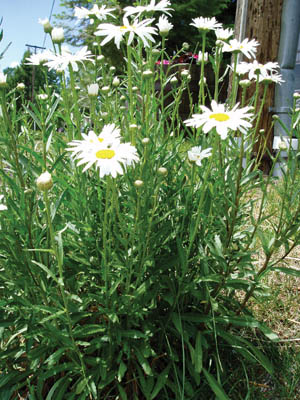
Chysanthemum maximum x superbum, Leucanthemum x superbum Chysanthemum maximum x superbum, Leucanthemum x superbum Shasta daisyPerky flowers bloom profusely from mid-summer through fall. This hardy perennial requires very little attention and attracts birds and butterflies.
Sun:Water:
Ornamental Grasses
Good news! There are no invasive Ornamental Grasses currently listed for this region.Invasive Shrubs of the Tahoe Basin
-
Leucanthemum vulgare (marguerite daisy)
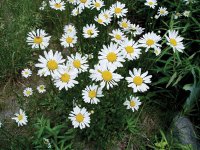
Leucanthemum vulgare Leucanthemum vulgare ox-eye daisy; dog daisy; margriet; marguerite daisy; moon daisy; white daisy; yellow daisy;This invasive white daisy is becoming an increasing problem in the West. It spreads rapidly from gardens to meadows and other open, sunny areas. It is often found in wildflower seed mixes.
Invasive: Do Not Plant -
Hypericum perforatum (St. John’s wort)
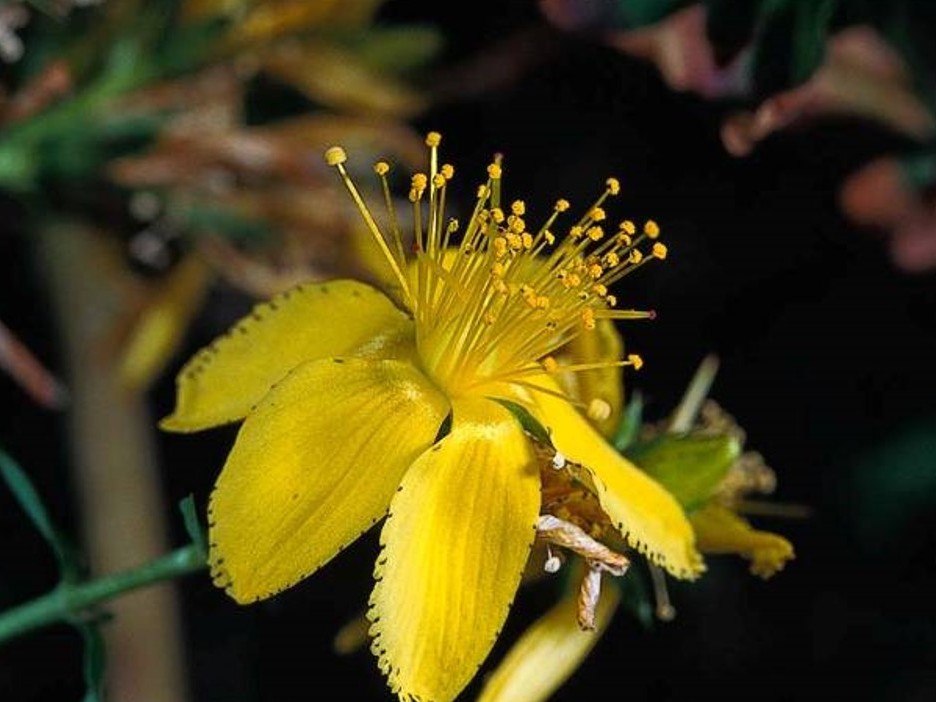
Hypericum perforatum Hypericum perforatum St. John's wort; klamathweed; tipton weed; goatweedAlso known as St. John's wort, this perennial grows erect to three feet tall and is topped with bright yellow flowers. It survives year-round due to a vigorous root system that directly competes with native vegetation. Toxic to horses and livestock.
Invasive: Do Not Plant -
Linaria spp. (toadflax)
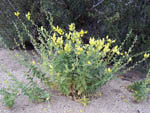
Linaria dalmatica ssp. dalmatica Linaria dalmatica ssp. dalmatica Dalmatian toadflax; broad-leaved toadflax; wild snapdragon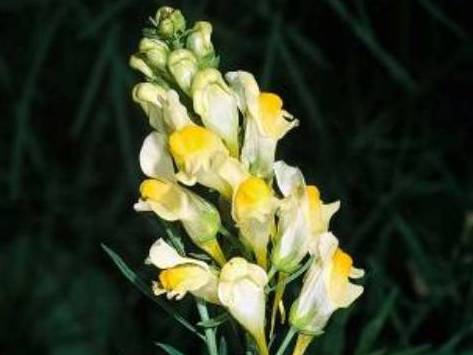
Linaria vulgaris Linaria vulgaris yellow toadflax; butter and eggs; common linaria; common toadflax; wild snapdragonBoth species have erect and branched stems bearing yellow flowers that resemble snapdragons. Yellow toadflax is also called "butter and eggs", and is typically shorter than Dalmatian toadflax. Their highly agressive root systems spread rapidly into natural forest areas and meadows.
Invasive: Do Not Plant -
Brooms
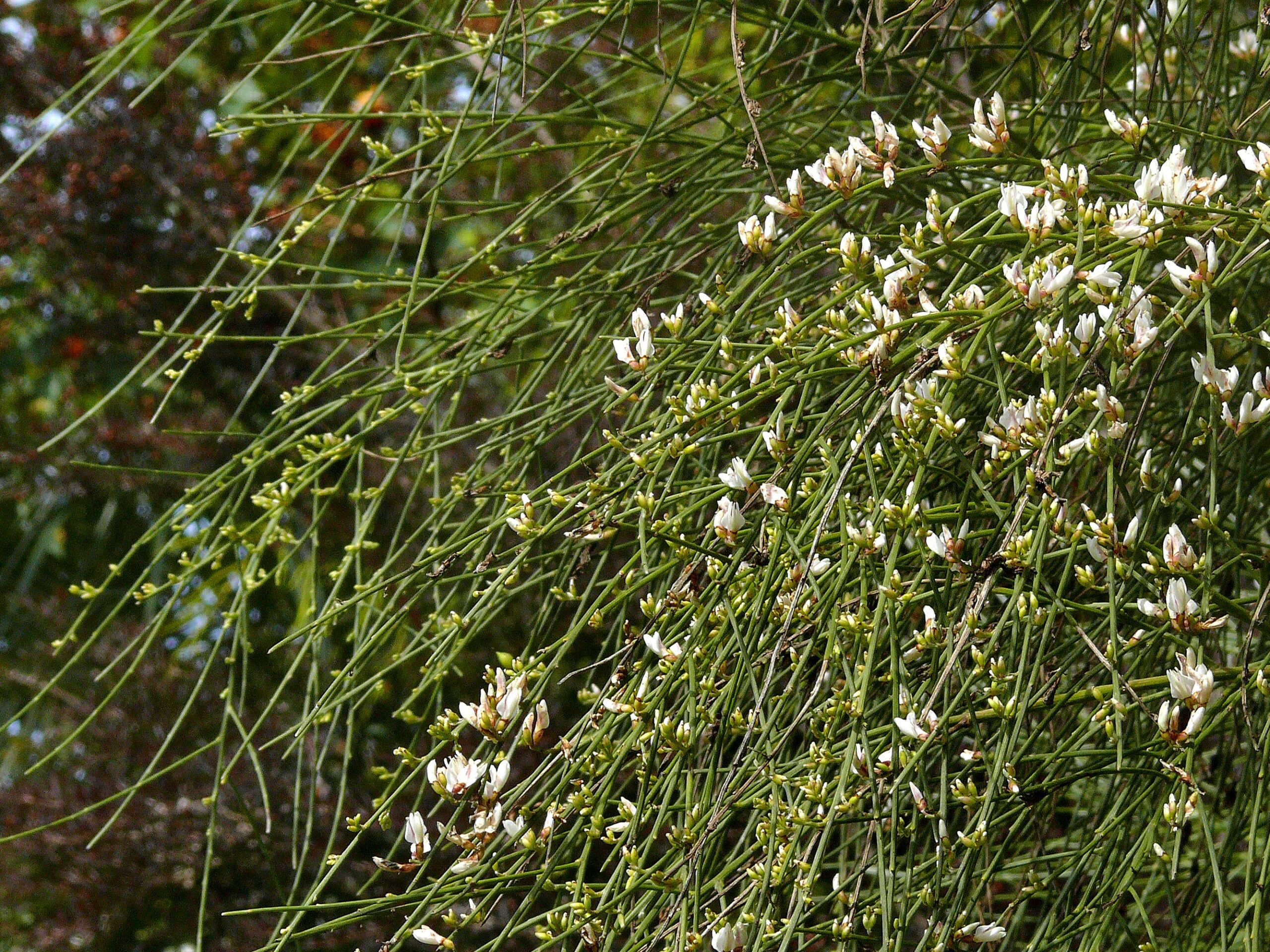
Genista monosperma Genista monosperma bridal veil broom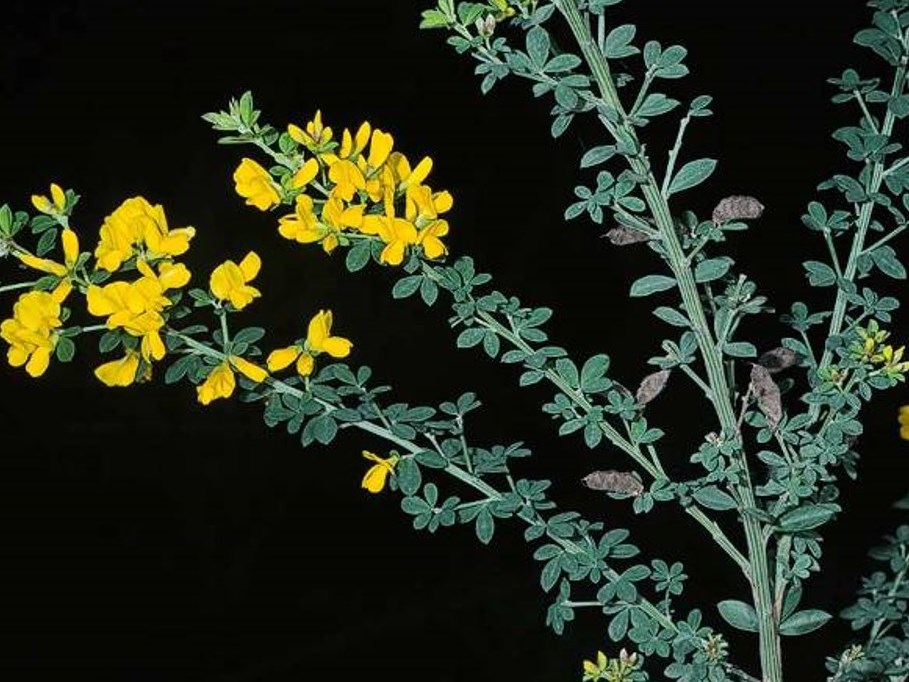
Genista monspessulana Genista monspessulana French broom; soft broom; canary broom; Montepellier broom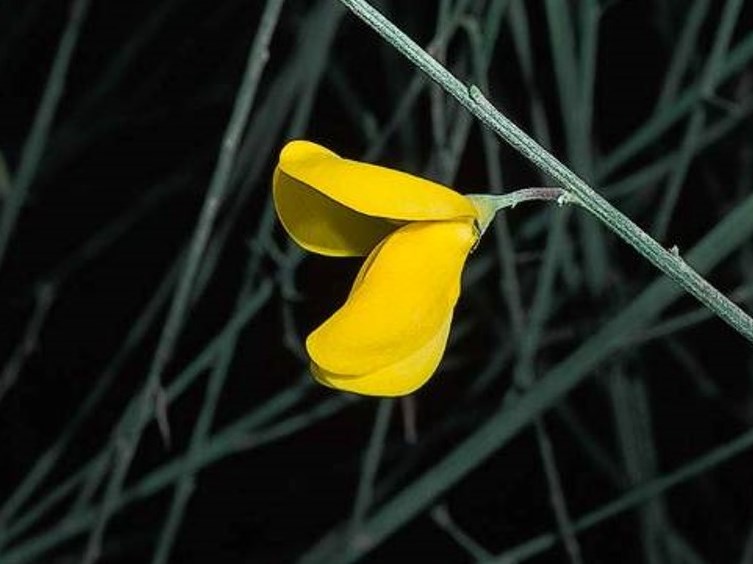
Cytisus striatus Cytisus striatus Portuguese broom; hairy-fruited broom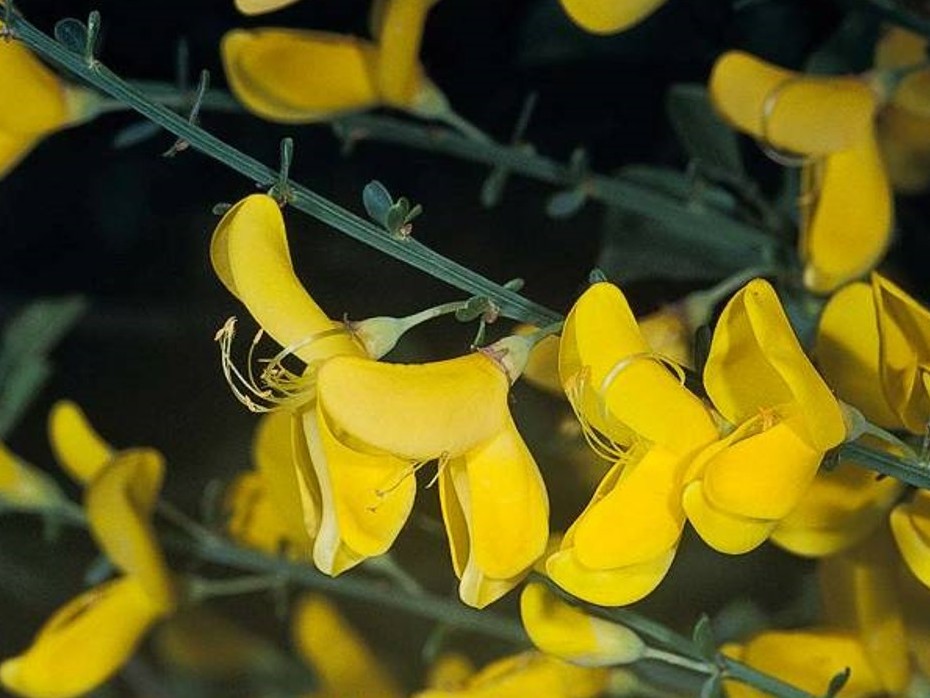
Cytisus scoparius Cytisus scoparius Scotch broom; English broom; common broom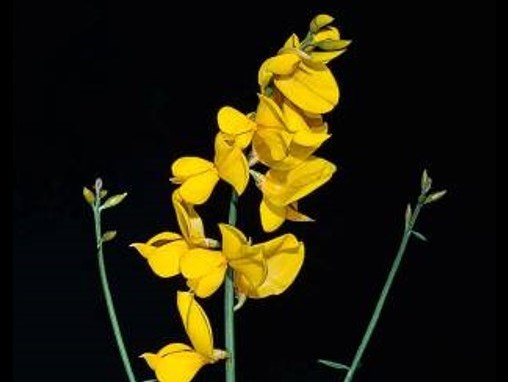
Spartium junceum Spartium junceum Spanish broomBrooms have invaded over one million acres in California. The flowers produce thousands of seeds that build up in the soil over time, creating dense thickets that obliterate entire plant and animal communities. Grows quickly, creating a fire hazard in residential landscapes. "Sterile" varieties haven't been independently verified or tested and are not recommended as substitutes.
"Sweet broom" (Cytisus spachiamus or Genista racemosa) is not known to be invasive. However, because we lack information on its potential for invading wildlands, we do not recommend it as a substitute for other brooms.
Invasive: Do Not Plant -
Sesbania punicea (wisterias)
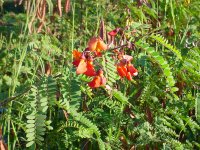
Sesbania punicea Sesbania punicea scarlet Wisteria; red Sesbania; rattlebox; Chinese WisteriaNew to California, spreading along the American River in central California. Also found in the Delta and in northern California. A serious problem in South Africa and Florida. Grows and spreads rapidly along river and stream corridors. Pushing out native vegetation and wildlife. Seeds are moved by washing downstream or are carried by birds.
Invasive: Do Not Plant
Recommended Shrubs for the Tahoe Basin
-
Rosa harrisonii
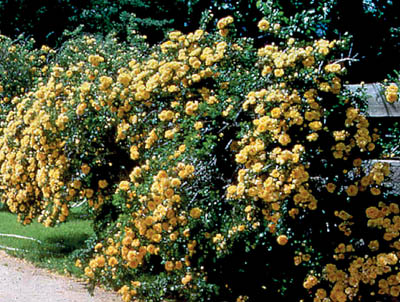
Rosa harrisonii Rosa harrisonii Harrison's yellow roseA fragrant, semi-double yellow rose that blooms profusely in the spring. It is robust and disease-resistant, with rich, green fern-like foliage that forms a hedge.
Sun:Water: -
Solidago candensis or californica
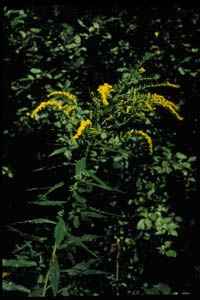
Solidago canadensis, S. californica Solidago canadensis, S. californica goldenrodThis late-blooming perennial is an important source of nectar for honeybees. plants grow in tight colonies and flowers produce a golden glow in the fall.
Sun:Water:Tahoe Basin native -
Mimulus guttatus
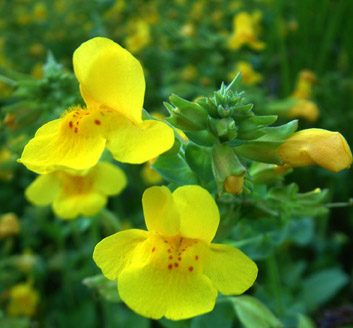
Mimulus guttatus Mimulus guttatus common yellow monkeyflowerIntense yellow flowers have reddish spots in the throat. They are naturally found in wet areas, enabling them to bloom from May through September. Annual or perennial.
Sun:Water:Tahoe Basin native -
Potentilla fruticosa
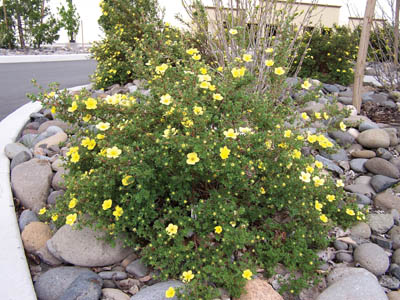
Potentilla fruticosa Potentilla fruticosa potentillaSmall, yellow buttercup-like flowers bloom in June and continue to brighten your garden until the first frost in the fall. This hardy, low-maintenance, deciduous shrub is an excellent addition to a butterfly garden. Perennial.
Sun:Water: -
Mahonia aquifolium
Mahonia aquifolium Oregon grape hollyThis tall, erect shrub has striking yellow flower clusters that are followed by blue berries. Holly-like leaves adorn this broadleaf evergreen.
Sun:Water: -
Achillea filipendulina
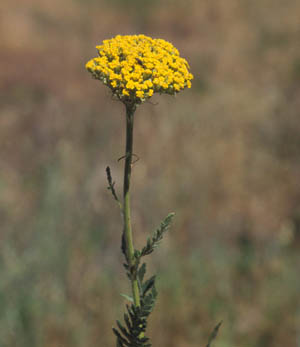
Achillea filipendulina Achillea filipendulina gold coin dwarfAccompanied by fragrant leaves, this yarrow has long-blooming mustard-yellow flowers. It is tolerant of hot, dry conditions and is considered a good choice for beginning gardeners. Perennial.
Sun:Water: -
Achillea x moonshine
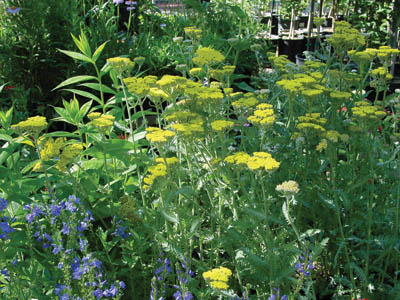
Achillea x moonshine Achillea x moonshine moonshine yarrowThis semi-evergreen shrub has long been a favorite among gardeners. Rounded heads of tiny, lemon-yellow flowers and bright silver foliage light up the garden.
Sun:Water: -
Anthemis tinctoria
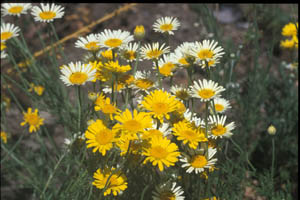
Anthemis tinctoria Anthemis tinctoria Susanna MitchellThese flowers brighten any garden with a non-stop display all summer long. The fern-like, silvery green leaves are fragrant when crushed.
Sun:Water: -
Antirrhinum majus
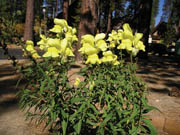
Antirrhinum majus Antirrhinum majus snapdragonSoft green foliage supports spikes of radiant, tubular flowers. Ideal for cut flowers and butterfly gardens. Biennial.
Sun:Water: -
Aster nova-belgii
Aster novi-belgii Michaelmas daisyOne of many cultivars, the "White Climax" variety has large, brilliant flowers that provide nectar in the fall. The dark green foliage can grow two feet tall and has contrasting wine-colored veins.
Sun:Water:
Palms
Good news! There are no invasive Palms currently listed for this region.Invasive Trees of the Tahoe Basin
-
Myoporum (false sandalwood)
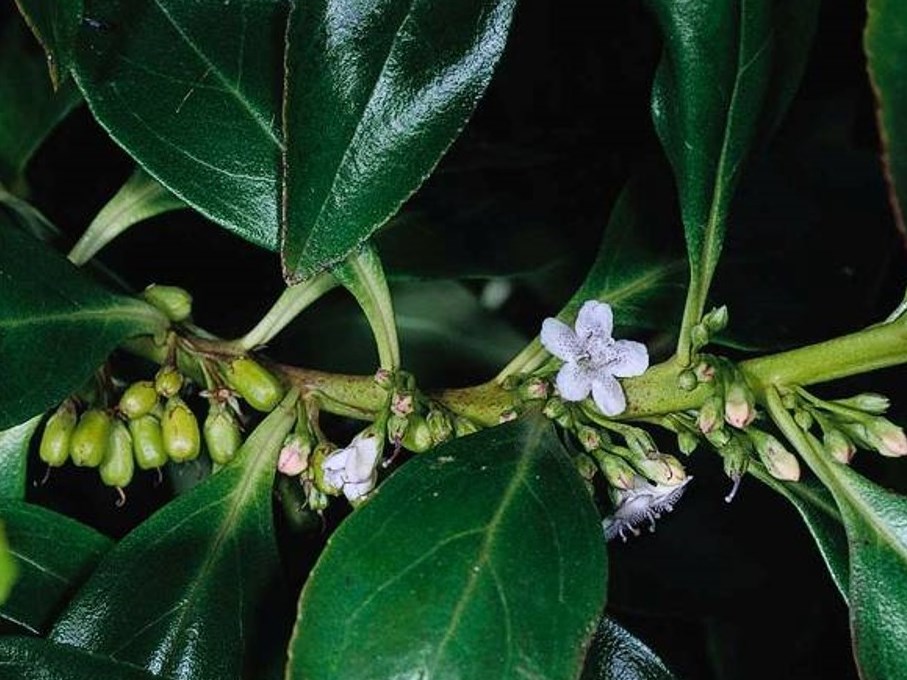
Myoporum laetum Myoporum laetum ngaio tree; false sandalwood; mousehole treeInvades along the coast from Sonoma County to San Diego. Forms dense stands with no other vegetation. Can cover large areas. Spread by birds. Leaves and fruits are toxic to wildlife and livestock. Burns easily. Doesn't typically spread in interior areas.
Invasive: Do Not Plant -
Schinus spp (pepper trees)
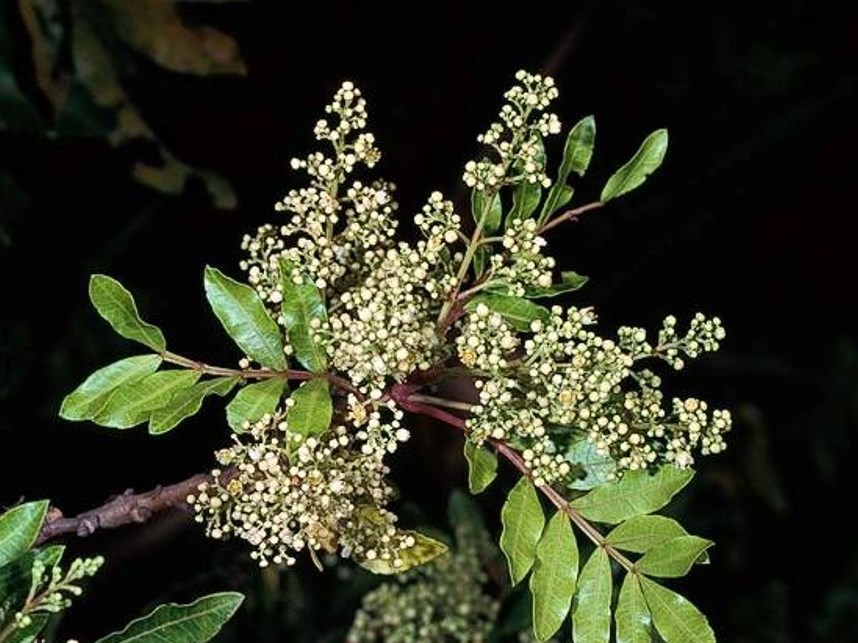
Schinus terebinthifolia Schinus terebinthifolia Brazilian pepper tree; Christmas-berry tree; Christmasberry; Florida holly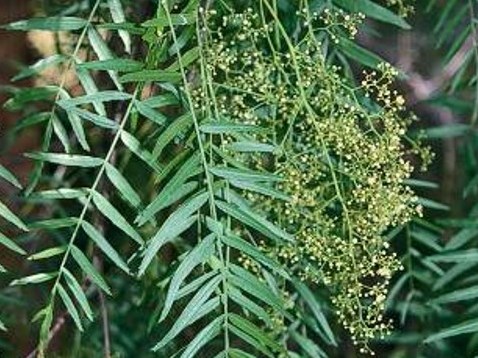
Schinus molle Schinus molle Peruvian peppertree; California peppertreePepper trees are native to South America (despite the fact that Peruvian peppertree is sometimes called California peppertree). Seeds are transported by birds and mammals into natural areas. The aggressive growth of peppers enables them to displace native trees and form dense thickets in natural areas. They produce undesirable suckering and sprout unwanted seedlings. A serious problem in southern California. Less of a problem in the San Francisco Bay Area and Central Valley, but care should be taken if planting near wildlands.
Invasive: Do Not Plant -
Ailanthus (tree of heaven)
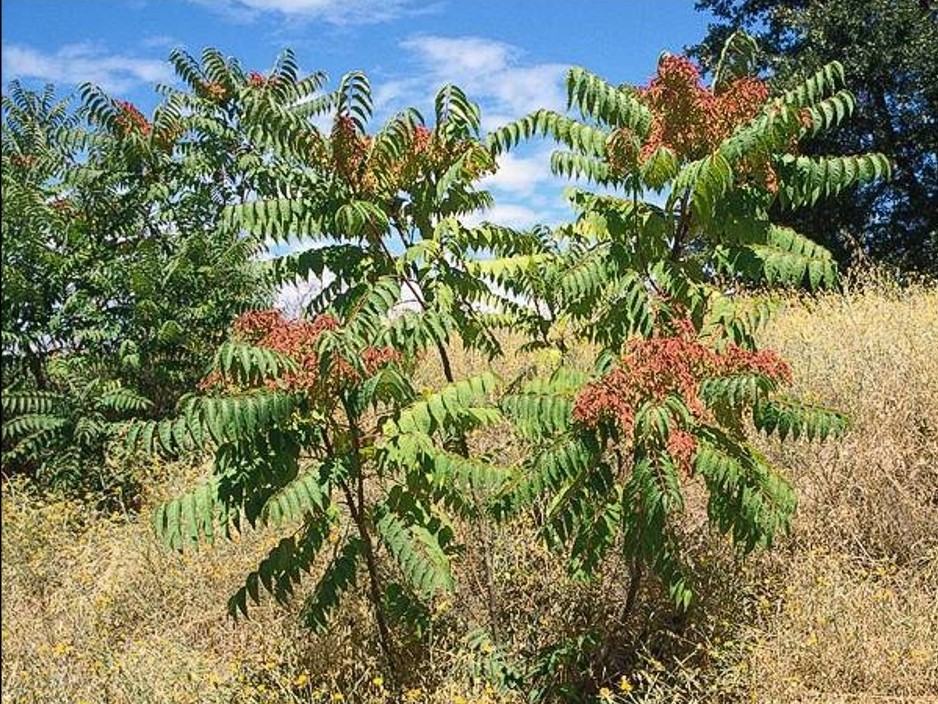
Ailanthus altissima Ailanthus altissima tree-of-heaven; Chinese sumac; paradise-tree; copal-treeAlthough not commonly sold in nurseries, this tree is sometimes "shared" among gardeners. Tree-of-heaven produces abundant root sprouts that create dense thickets and displace native vegetation. These root sprouts can be produced as far as 50 feet away from the parent tree. In California, it is most abundant along the coast and Sierra foothills, as well as along streams. A single tree can produce up to a million seeds per year.
Invasive: Do Not Plant -
Eucalyptus globulus
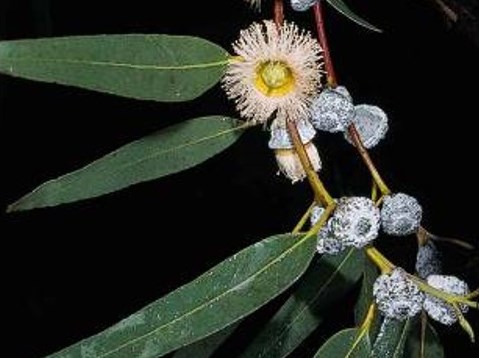
Eucalyptus globulus Eucalyptus globulus blue gum; Tasmanian blue gum; blue gum Eucalyptus; common Eucalyptus; Southern blue gum; Victorian blue gumFound along the coast from Humboldt to San Diego and in the Central Valley. Most invasive in coastal locations. Easily invades native plant communities, causing declines in native plant and animal populations. Fire departments throughout Southern California recommend against using eucalyptus trees for landscaping because they are extremely flammable.
Invasive: Do Not Plant -
Elaeagnus angustifolia (Russian olive)
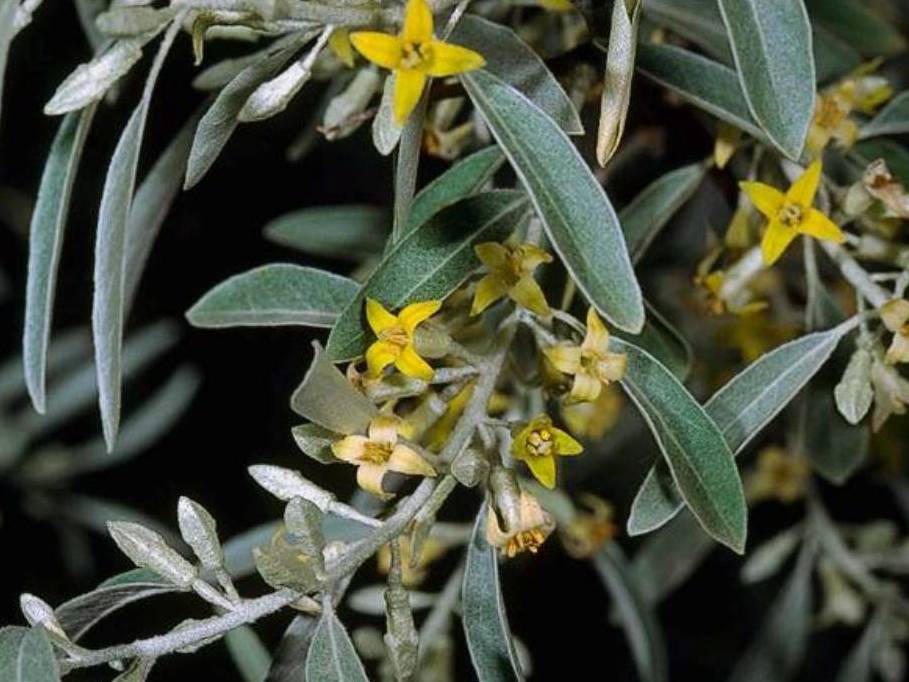
Elaeagnus angustifolia Elaeagnus angustifolia Russian olive; oleasterFound throughout California. Able to spread long distances with the help of birds and mammals. Invades river and stream corridors, pushing out native willows and cottonwoods. Reduces water levels. Provides poor wildlife habitat. Serious invader in other western states.
Invasive: Do Not Plant -
Tamarix (saltcedar)
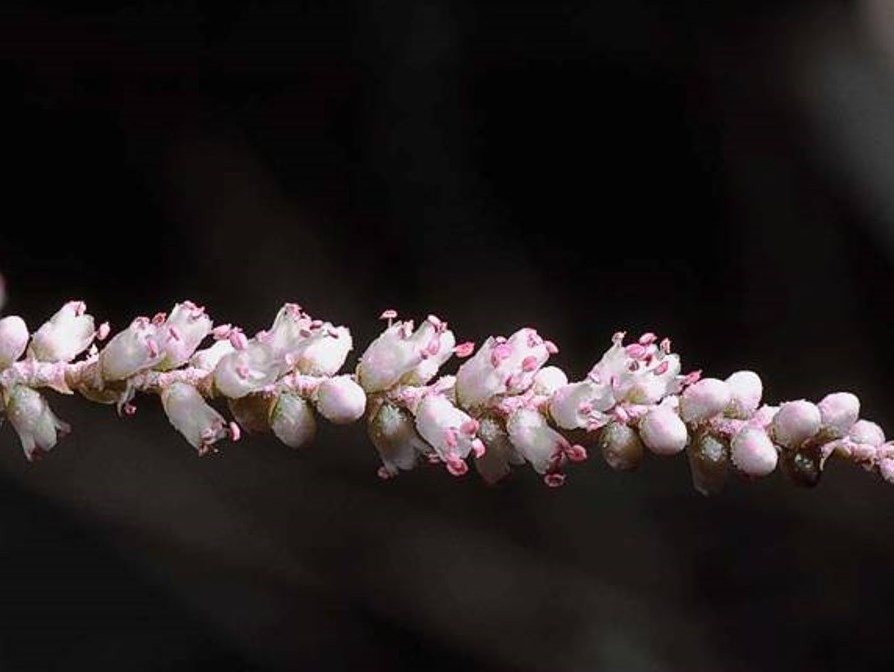
Tamarix aphylla Tamarix aphylla athel; athel pine; tamarisk; evergreen saltcedar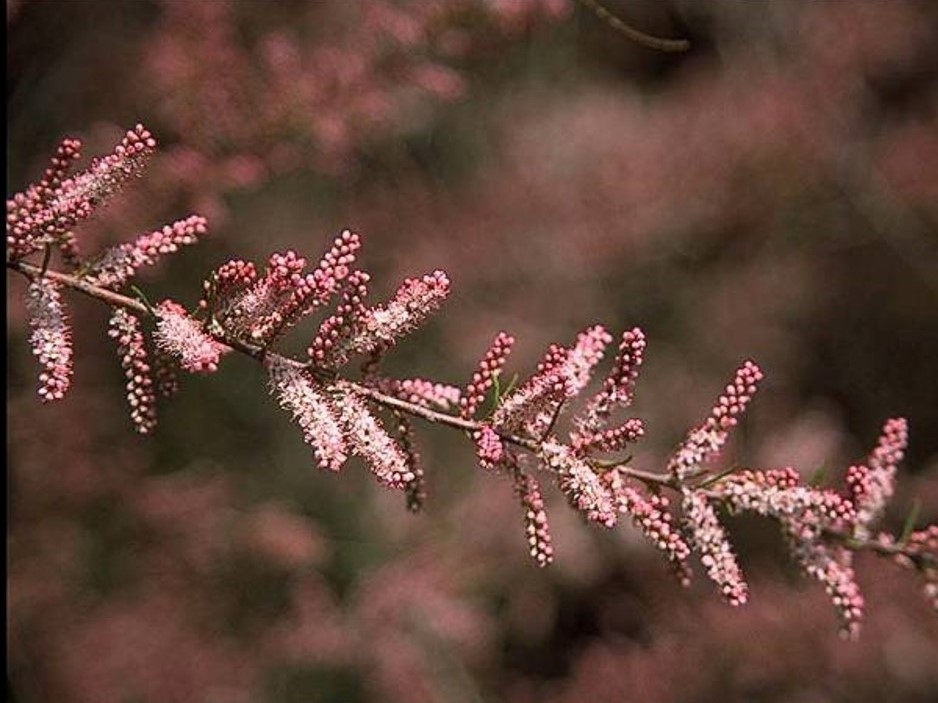
Tamarix parviflora Tamarix parviflora smallflower tamarisk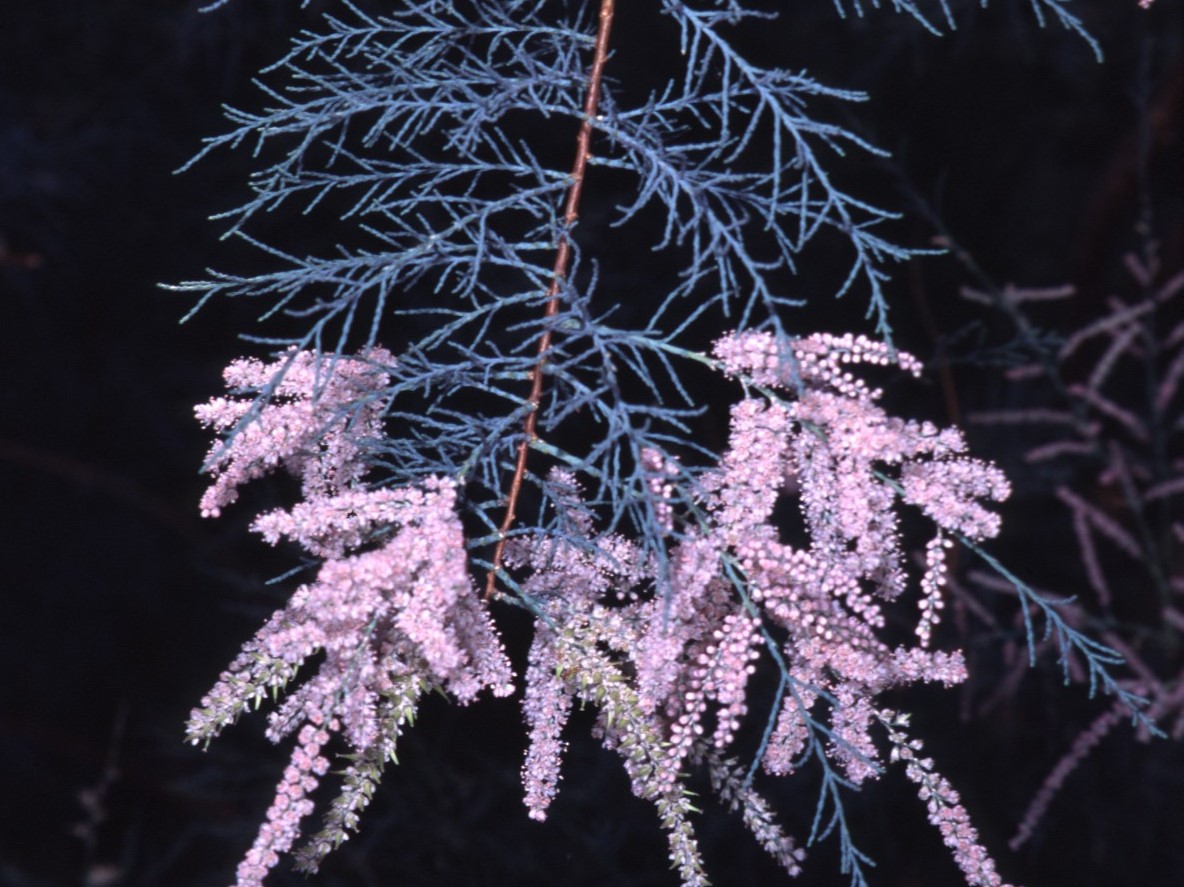
Tamarix ramosissima Tamarix ramosissima saltcedar; tamariskA serious invader throughout California and southwestern states. Uses excessive amounts of water, increases soil salinity, changes water courses. Diminishes wildlife habitat, and increases fire hazard. Not commonly sold but still occasionally available.
Invasive: Do Not Plant -
Crataegus monogyna
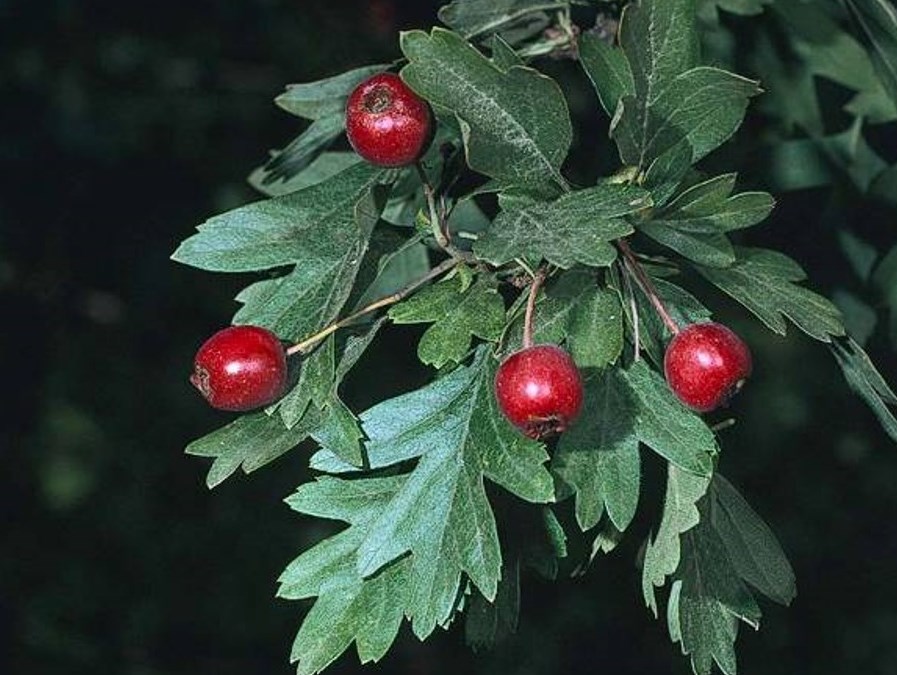
Crataegus monogyna Crataegus monogyna English hawthorn; common hawthorn; oneseed hawthorn; May tree; singleseed hawthorn; azzarola; neapolitan medlar; oneseed hawthorn; whitethorn;An established invader of the Pacific Northwest, now spreading through northern California. Capable of long-range dispersal by birds. Creates dense thickets, changing the structure of woodland understories. May hybridize with and threaten native hawthorn species.
Invasive: Do Not Plant
Recommended Trees for the Tahoe Basin
-
Tristaniopsis laurina
Formal plant; can be trained as a single or multistemmed tree. Mahogany-colored bark peels, revealing new, satiny white bark beneath. Yellow flowers produce a good show. Can be slow-growing. Damaged by very cold winters. Try cultivar 'Elegant'. Evergreen. Zones: 15-24. Height: To 45 ft. Width: 5-30 ft.
Sun:Water: -
Quercus macrocarpa
Rugged-looking tree with flaky grayish bark. Long, deeply-lobed leaves are glossy green. Large, distinctive acorns covered in fringed cap. Tolerant of poor conditions. Acorns can be a trip hazard. Deciduous. Zones: 1-11, 14-23. Height: 60-75 ft., equally wide when mature.
Sun:Water: -
Styrax japonicus
Slender, graceful trunk. Broad crown. Leaves may turn red or yellow in fall. Delicate, fragrant, white flowers hang below leaves, creating a layered effect. Deciduous. Zones: 4-9, 14-21. Height: 30 ft., narrow in youth, wide in maturity.
Sun:Water: -
Taxodium distichum
Delicate, feathery foliage sprays turn reddish-brown before dropping in the fall. Tolerates drought or very wet conditions, and any but the most alkaline soil. Trunk can be buttressed at the base. No pests or diseases. Easy to plant and care for. Tolerates any amount of water. Deciduous. Zones: 2-10, 12-24. Height: 50-70 ft. Width: 20-30 ft.
Sun:Water: -
Michelia doltsopa
Prune to create a narrow, upright tree. Furry brown buds open to cream or white blossoms. Thin, leathery, dark green leaves are red underneath. Evergreen. Zones 15-24. Height: To 25 ft.
Sun:Water: -
Liriodendron tulipifera
Straight, columnar trunk with a tall, pyramidal crown. Unique lyre-shaped leaves. Foliage starts bright green, turns bright yellow in fall. Tulip-shaped flowers in late spring are interesting but not showy. Beautiful large shade or lawn tree. Likes slightly acidic, well-drained soil and plenty of room. Deciduous. Zones: 2-12, 14-24. Height: 60-80 ft. Width: To 40 ft.
Sun:Water: -
Metasequoia glyptostroboides
Soft, pale green needles turn reddish-brown before falling in autumn, leaving a beautiful winter silhouette. Grows very fast when young. Older trees have fluted trunks. Resistant to oak root fungus. Not suitable for very arid regions or the coast. Deciduous. Zones: 3-10, 14-24. Height: To 90 ft. Width: To 20 ft.
Sun:Water: -
Elaeocarpus decipiens
New leaves rusty and hairy, turning smooth and bright green. Old leaves turn red before dropping. Blooms with tiny, scented, white flowers in clusters followed by small, blue-black, edible fruits. Likes rich, well-drained soil. Needs little pruning. Evergreen. Zones: 8-9, 14-24. Height: 30-60 ft. Width: 20-30 ft.
Sun:Water: -
Eriobotrya deflexa
Fast-growing and easily trained. New leaves emerge bright copper before turning green. Bunches of creamy white flowers in spring. Easy to plant and care for. Requires well-drained soil. Can be subject to fireblight. Evergreen. Zones: 8-24. Height: 12-30 ft. Width: 15-30 ft.
Sun:Water: -
Eucalyptus nicholii
One of the cleanest, most graceful eucalyptus, with weeping branches and not too much litter. Crushed leaves smell a bit like peppermint. Furrowed, rich, reddish-brown bark. Damaged by very cold winters. Evergreen. Zones: 5, 6, 8-24. Height: 36-48 ft. Width: 15-36 ft.
Sun:Water: -
Chionanthus retusus
Blooms like clouds of the whitest, feathery flowers. Handsome bark provides winter interest. Will grow in most central California environments. The olive-like fruits can be a litter problem. May produce a significant amount of pollen. Deciduous. Zones: 3-9, 14-24. Height: To 20 ft., not quite as wide.
Sun:Water:
Invasive Aquatic Plants of the Tahoe Basin
-
Eichhornia crassipes (water hyacinth)
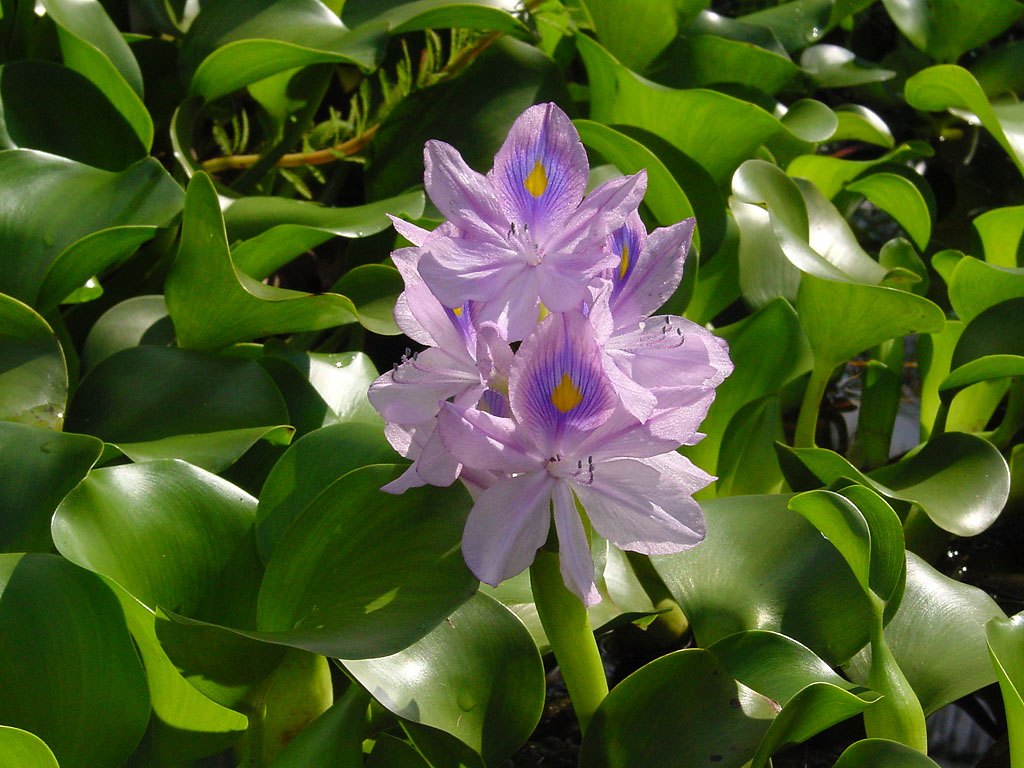
Eichhornia crassipes Eichhornia crassipes water hyacinthReputed to be the fastest-growing plant in the world! Can double in size in a week during hot weather. Forms dense mats that impede water flow. Seeds can live 15-20 years. The State of California has spent $45 million over 15 years to control water hyacinth in the Sacramento-San Joaquin Delta.
Invasive: Do Not Plant -
Hydrilla verticillata (water thyme)
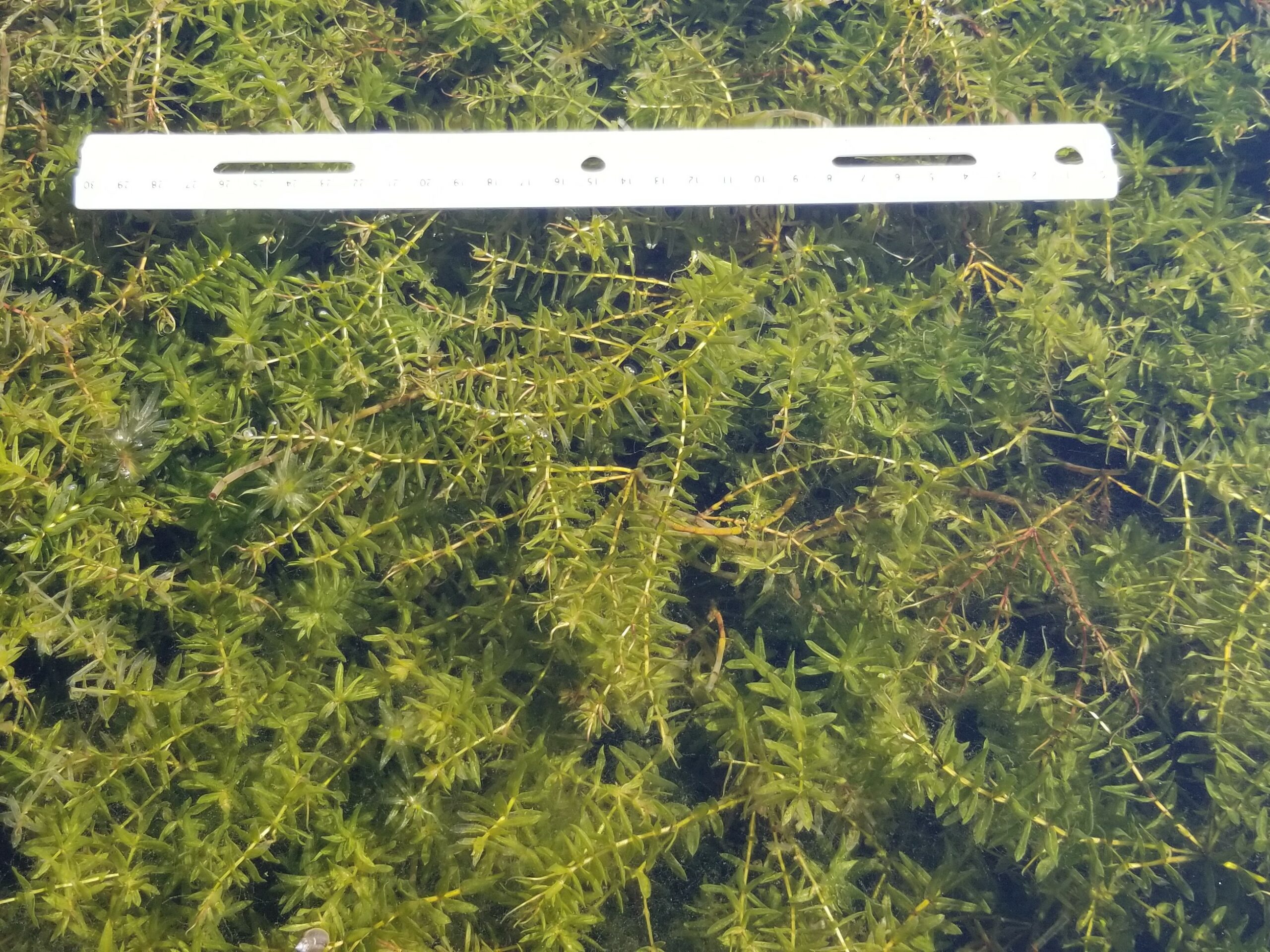
Hydrilla verticillata Hydrilla verticillata Hydrilla; water thyme; Florida ElodeaIllegal to sell or possess in California. Has arrived in California mixed with shipments of water lilies and as a mislabeled aquatic plant. Fragments quickly start new colonies.
Invasive: Do Not Plant -
Lythrum salicaria (purple loosestrife)
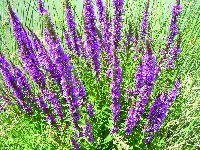
Lythrum salicaria Lythrum salicaria purple loosestrifeInvades streambanks and wetlands throughout the U.S. Persists year to year from root buds and from the root crown. Although not commonly sold in California, this plant is available for purchase on the internet. One plant can produce 2.7 million seeds. Has the potential to infest rice fields.
Invasive: Do Not Plant -
Ludwigia (waterprimrose)
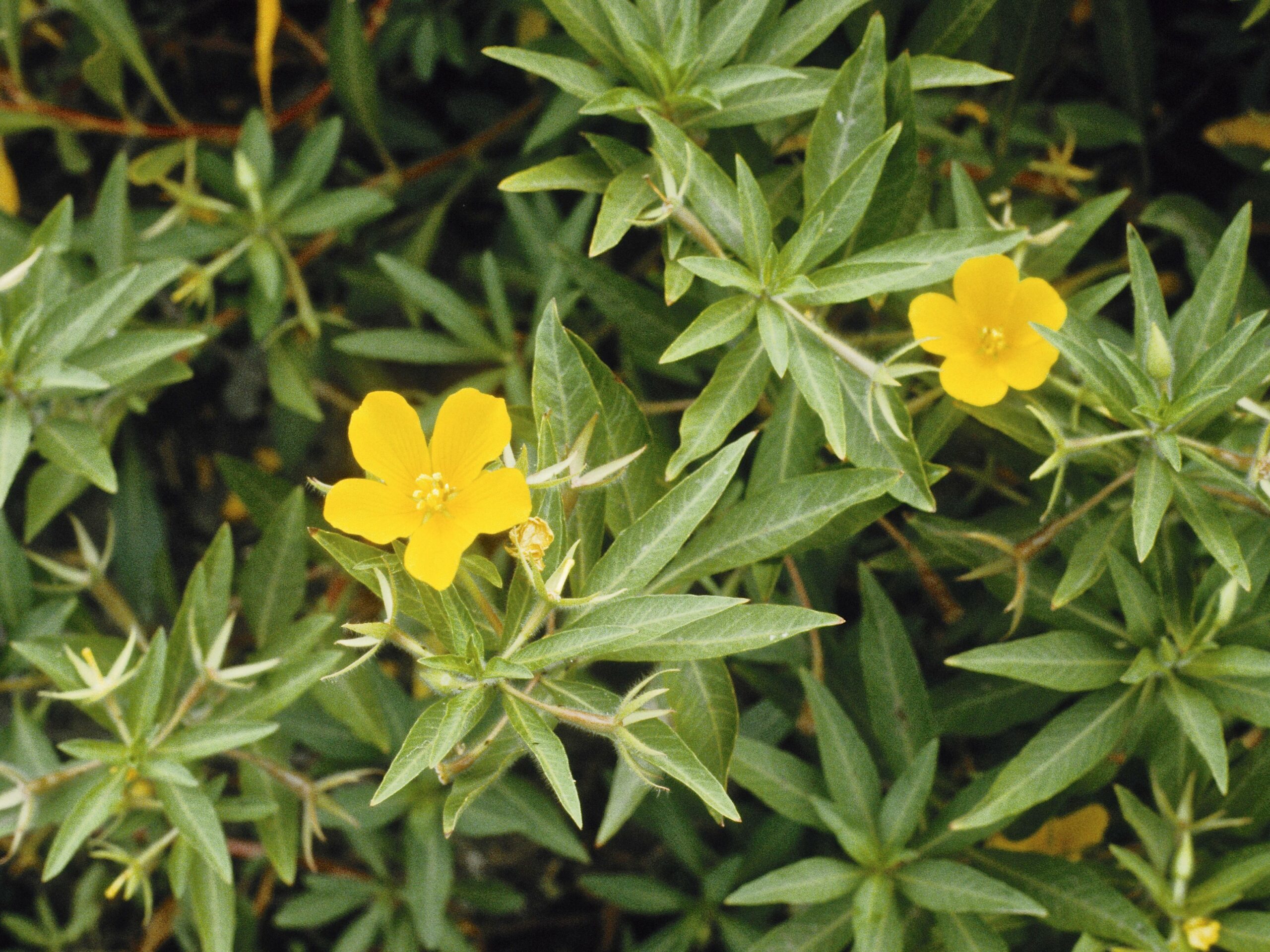
Ludwigia hexapetala Ludwigia hexapetala creeping waterprimrose; Uruguay waterprimrose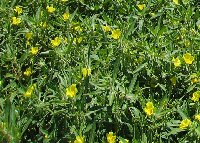
Ludwigia peploides Ludwigia peploides floating water primrose; California waterprimroseCrowds out native plants and reduces water quality. Dense mats slow water movement and create habitat for mosquito larva, which can carry West Nile virus. Although there are native Ludwigia, do not collect them from the wild.
Invasive: Do Not Plant -
Iris pseudacorus (yellowflag iris)
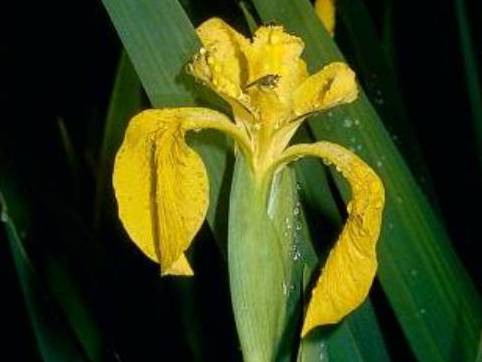
Iris pseudacorus Iris pseudacorus yellowflag Iris; pale yellow IrisForms colonies along streambanks. Listed as a noxious weed in Nevada, Expanding in the Pacific Northwest. Uncommon in California, but causes serious problems in other regions with similar climates.
Invasive: Do Not Plant -
Salvinia molesta (giant salvinia)
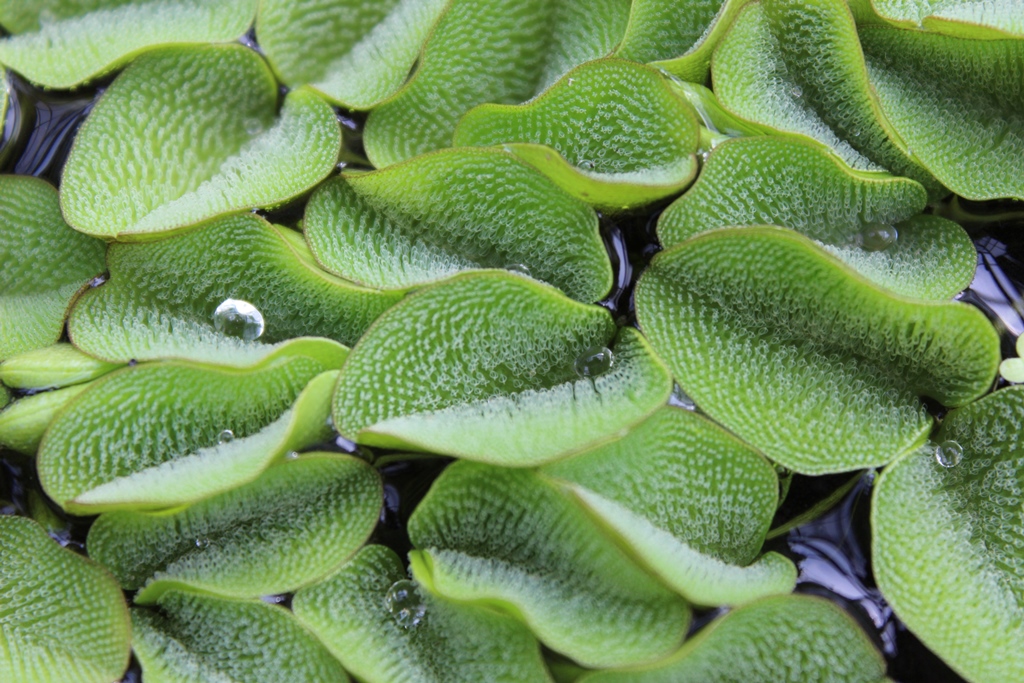
Salvinia molesta Salvinia molesta giant Salvinia; karibaweed; water velvet; African pyle; aquarium watermoss; water fern; koi kandyIllegal to sell in the US. Floating mats up to 3 ft. thick reduce light and dissolved oxygen in the water so that few living things can survive. Common salvinia (Salvinia minima) may be sold, but species are difficult to tell apart.
Invasive: Do Not Plant -
Egeria densa
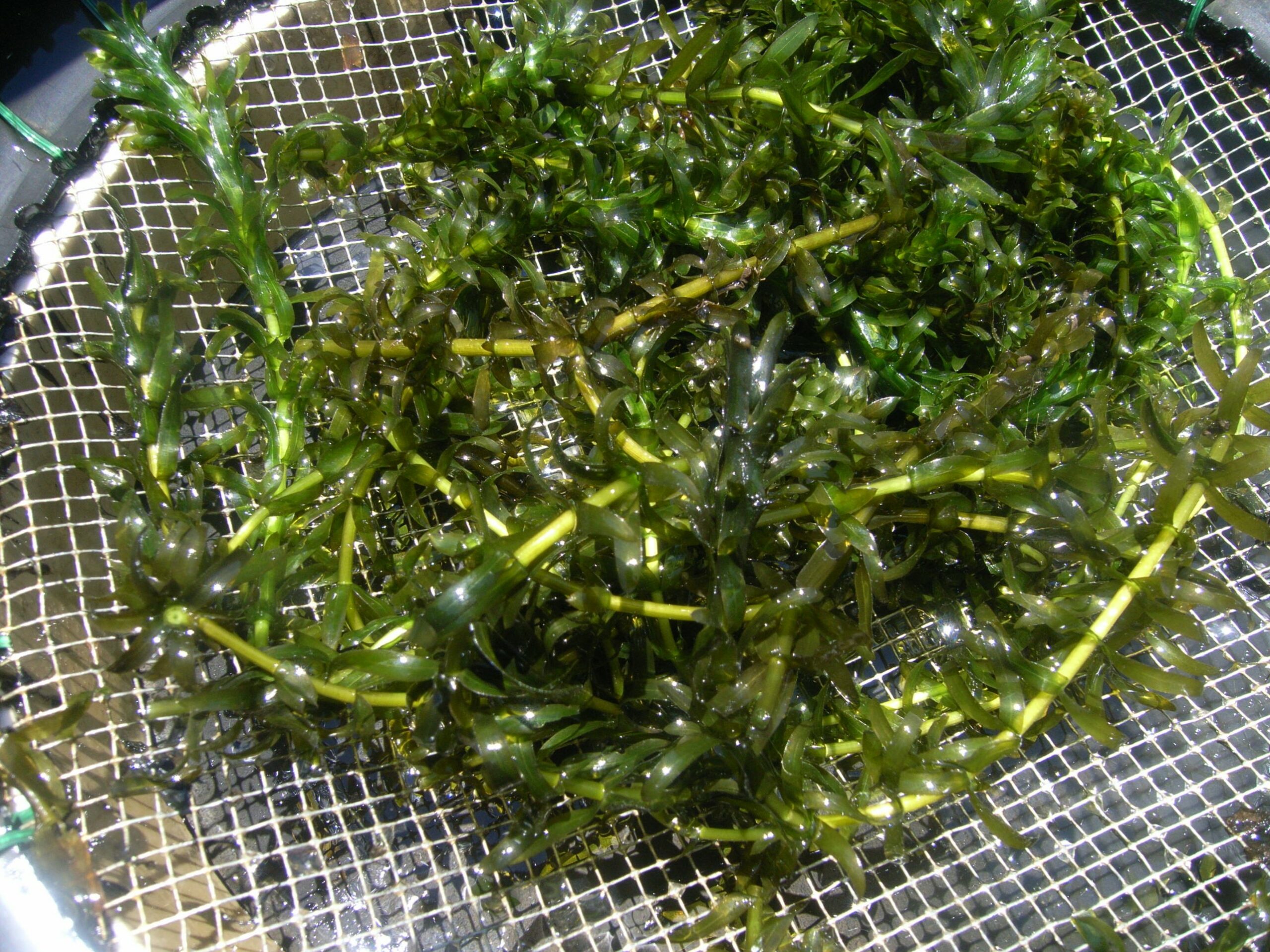
Egeria densa Egeria densa Brazilian Egeria; EgeriaInfests 7000 acres in the Sacramento-San Joaquin Delta. Aggressively invades natural waterways, displacing native aquatic plants and forming dense mats that impede water flow.
Invasive: Do Not Plant -
Myriophyllum spicatum (spike watermilfoil)
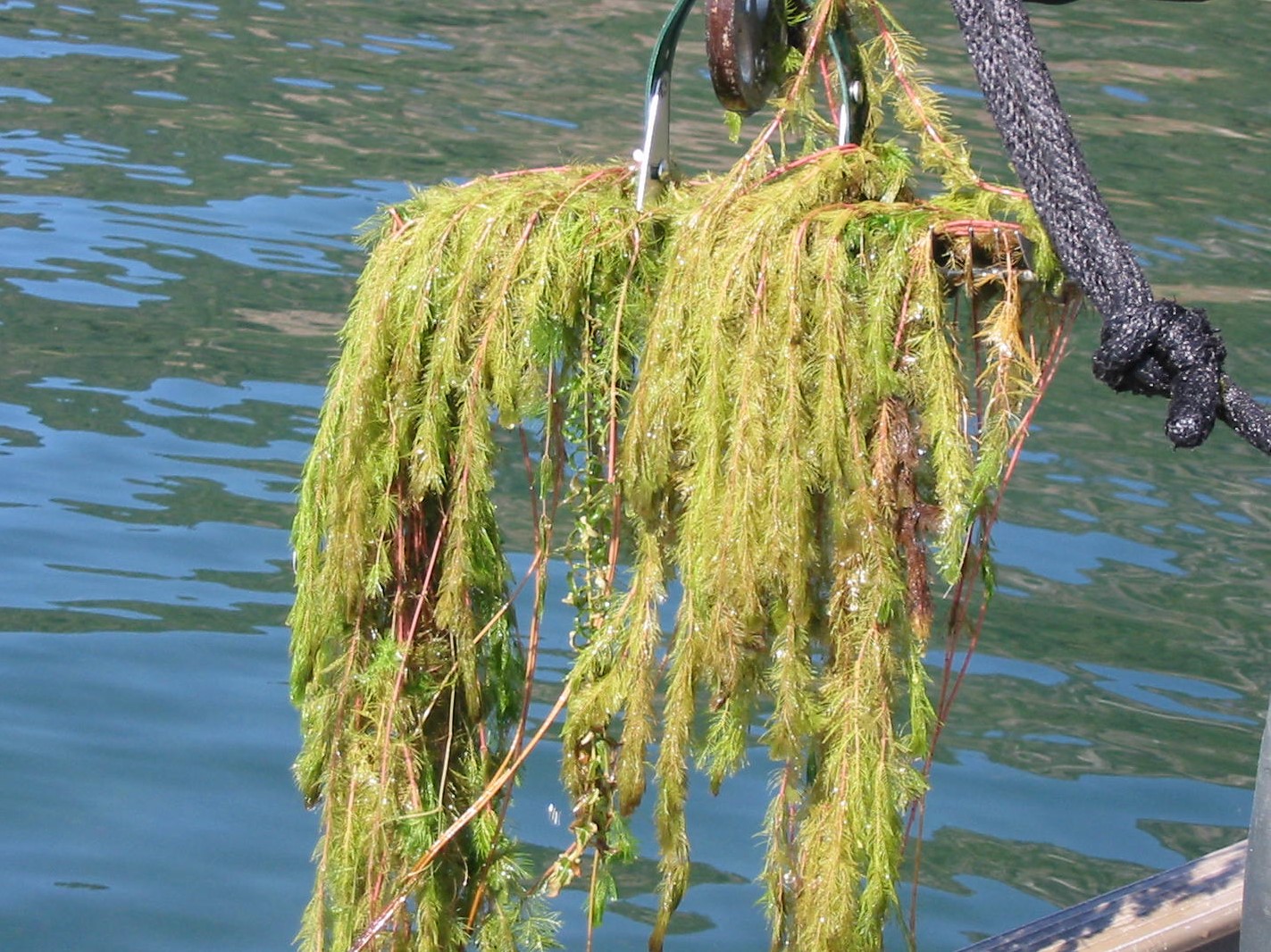
Myriophyllum spicatum Myriophyllum spicatum spike watermilfoil, Eurasian watermilfoilThe most widespread submerged invasive aquatic plant in California and a serious problem in Lake Tahoe. Stems are brittle and break easily, starting new infestations when spread by boats or water birds.
Invasive: Do Not Plant -
Myriophyllum aquaticum (watermilfoil)
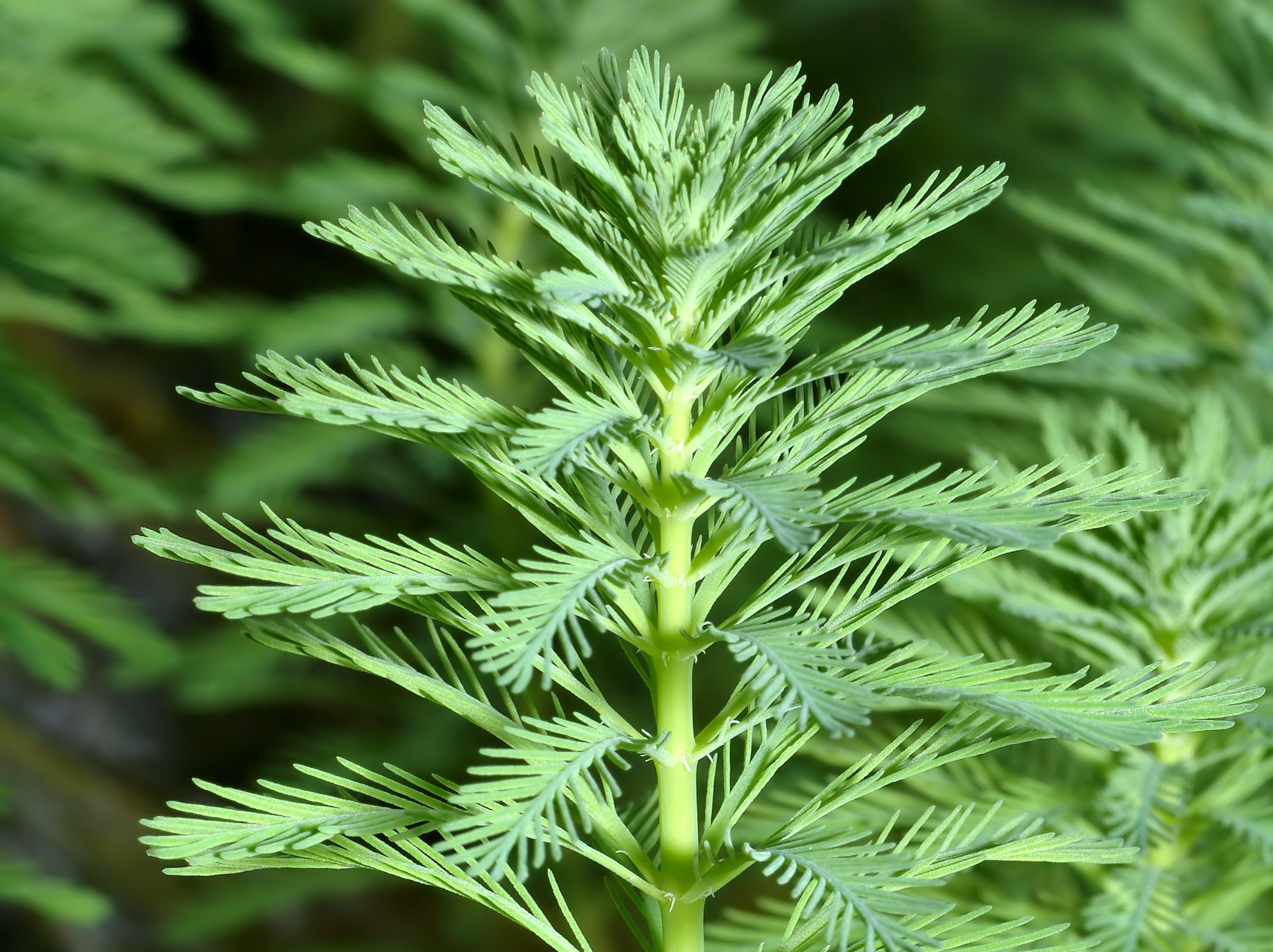
Myriophyllum aquaticum Myriophyllum aquaticum parrotfeather; Brazilian watermilfoil; parrotfeather watermilfoil; thread-of-life;Forms dense mats that impede water flow. Stems are brittle and break easily. Spread by boats or migrating water birds. Uncommon in California but has the potential to spread.
Invasive: Do Not Plant -
Arundo (aquatic)
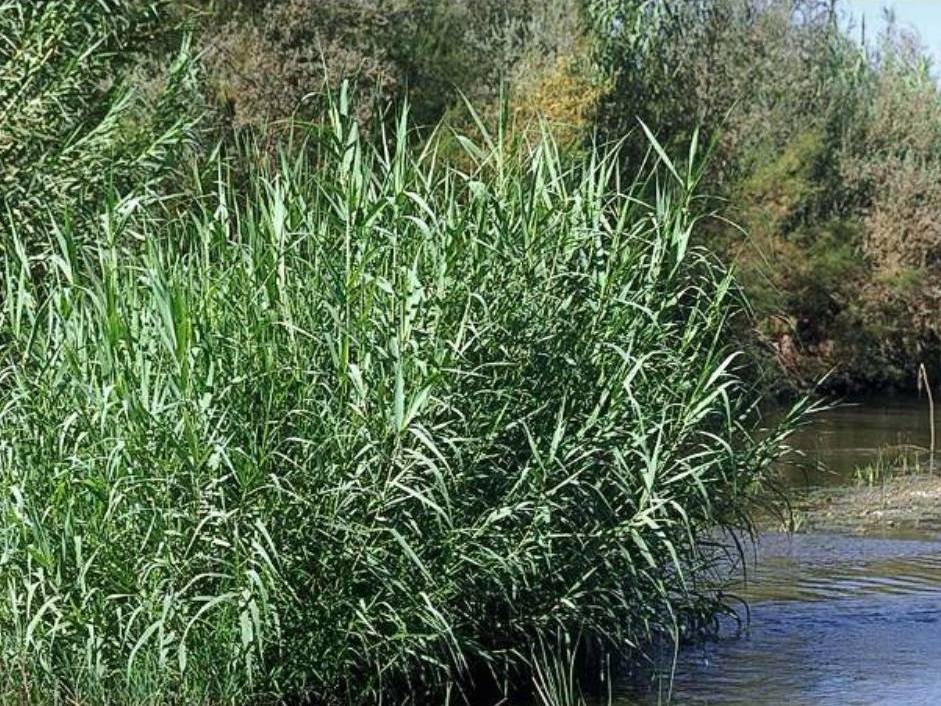
Arundo donax Arundo donax giant reedA serious problem in coastal streams. Dense growth damages habitat, while creating a fire and flood hazard. Variegated varieties are also problematic and are not recommended.
Invasive: Do Not Plant
Recommended Aquatic Plants for the Tahoe Basin
-
Sagittaria spp.
Sagittaria latifolia arrowhead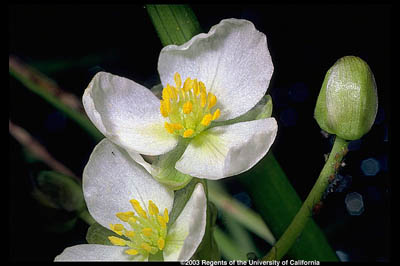
Sagittaria montevidensis Sagittaria montevidensis arrowheadSagittaria lancifolia white swan, red swanPond Margin or Bog . Striking arrow-shaped leaves and white flowers. Grows in moist soil or water 6 inches or more deep. S. latifolia grows 12 to 20 inches; S. montevidensis to 4 feet. Also try S. lancifolia (white swan or red swan) for a specimen plant with green or red stems and a 7-foot flower spike.
Sun:Water:Tahoe Basin native -
Mimulus aquatics

Mimulus guttatus Mimulus guttatus common yellow monkeyflowerPond Margin or Bog. Annual or perennial. Fills out a 4 feet x 4 feet space in spring and summer. May die back then return the next year. Yellow flowers with reddish spots resemble snapdragons. Hummingbirds like it; deer don't. Also try M. cardinalis for red flowers.
Sun:Water:Tahoe Basin native -
Nuphar polysepalum
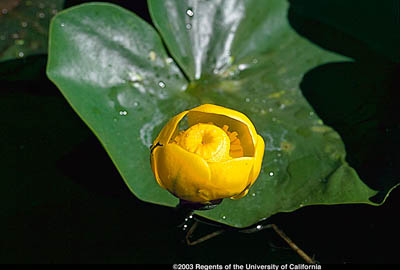
Nuphar polysepala Nuphar polysepala yellow pondlilyFloating or Rooted Emergent Plants. A native plant with a dramatic yellow flower and round leaves up to a foot in diameter. Foliage is submerged in winter and emerges in spring. May take more effort to find for sale.
Sun:Water:Tahoe Basin native -
Polygonum amphibium
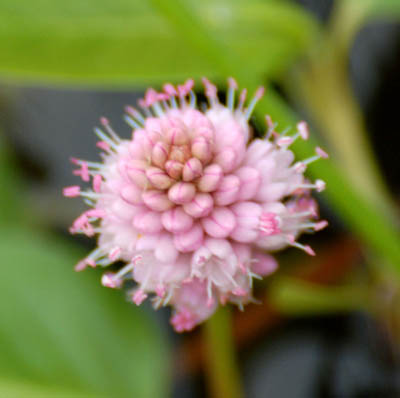
Polygonum amphibium var. stipulaceum Polygonum amphibium var. stipulaceum water smartweedSubmerged Plants. A versatile, creeping plant that does well in water depths ranging from moist soil to 4 feet of water over the crown. Long, narrow, floating leaves, and bright-pink flowers.
Sun:Water:Tahoe Basin native -
Pontedaria cordata
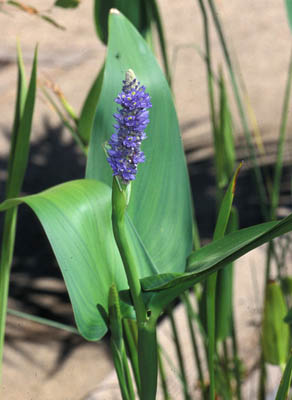
Pontedaria cordata Pontedaria cordata pickerel weedPond Margins. Heart-shaped leaves surround dramatic flower spikes. Excellent filtration ability. Place in containers in 1 foot of water. 3 to 4 feet tall, 2 to 2 1/2 feet wide.
Sun:Water:Tahoe Basin native -
Iris ensata
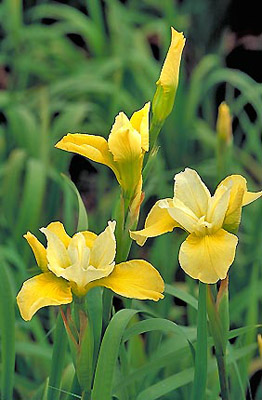
Iris ensata 'Variegata' Iris ensata 'Variegata' Japanese irisPond Margin or Bog
Sun:Water: -
Iris laevigata

Iris laevigata and cultivars Iris laevigata and cultivars laevigata irisPond Margin or Bog. A true water-loving iris that will do well in 6 inches of water. Flowers in white, purple, lavender, and pink. Yellow-blooming varieties are available, but rare. Leaves to 18 inches tall.
Sun:Water: -
Iris missouriensis
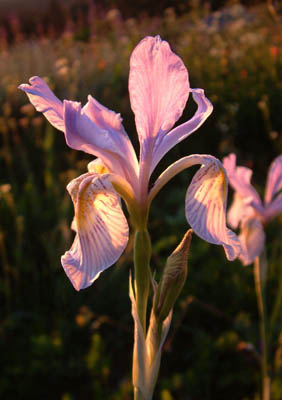
Iris missouriensis, I. longipetala Iris missouriensis, I. longipetala western blue flag irisPond Margins. A native iris with flowers ranging from white to blue to lavender. Leaves to 2 feet tall. Likes open, sunny, moist areas. Smaller in scale than yellowflag iris.
Sun:Water:Tahoe Basin native -
Iris sibirica
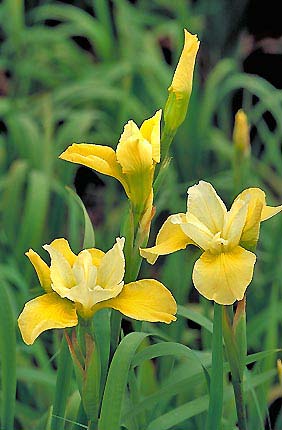
Iris sibirica and hybrids Iris sibirica and hybrids Siberian irisPond Margin or Bog.
Sun:Water: -
Juncus effusus
Juncus effusus common rushSun:Water:Tahoe Basin native -
Ligularia wilsoniana
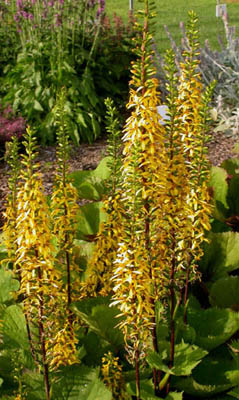
Ligularia wilsoniana Ligularia wilsoniana Wilson's ligulariaPond Margin or Bog. A tall and showy wetland perennial with spikes of bright yellow, daisy-like flowers. Stems grow to six feet tall.
Sun:Water: -
Lobelia spp
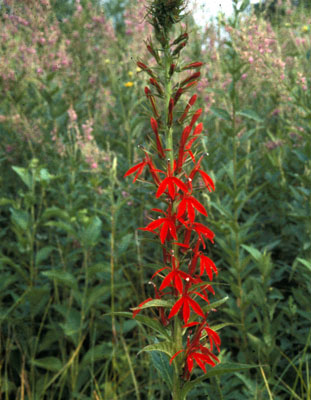
Lobelia cardinalis Lobelia cardinalis lobeliaLobelia fulgens lobeliaLobelia siphilica lobeliaPond Margin Plants. A spectacular blooming bog plant. Tubular flowers resemble honeysuckle or salvia and attract hummingbirds. L. cardinalis and L. fulgens to 6 feet with red flowers; L. siphilica grows 2 to 3 feet with blue flowers.
Sun:Water:Tahoe Basin native -
Lysochiton americanum
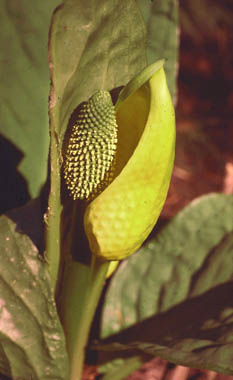
Lysochiton americanum Lysochiton americanum yellow skunk cabbagePond Margin or Bog
Sun:Water:Tahoe Basin native -
Marsilea spp.
Marsilea spp. water cloverFloating or Rooted Emergent Plants.
Sun:Water:Tahoe Basin native -
Elodea canadensis
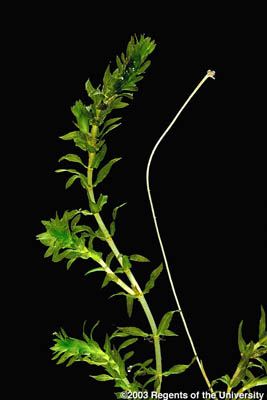
Elodea canadensis Elodea canadensis waterweedSubmerged Plants. One of the best oxygenating plants. Has dark green leaves and provides food and shelter for fish. Dies back in winter. Grows best in fine sand but may need to be controlled in small ponds. (Sometimes also sold under the name anacharis.)
Sun:Water:Tahoe Basin native -
Brasenia schreberi
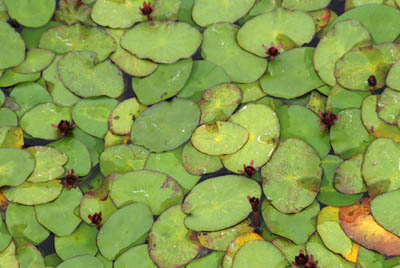
Brasenia schreberi Brasenia schreberi watershieldFloating or Rooted Emergent Plants.
Sun:Water:Tahoe Basin native -
Ceratophyllum demersum
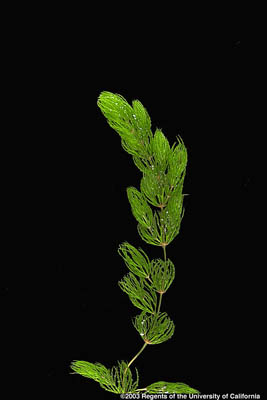
Ceratophyllum demersum Ceratophyllum demersum coontailSubmerged Plants. A rootless, deciduous perennial with slender stems and forked leaves. Tolerates shade and hard water. Good oxygenator.
Sun:Water:Tahoe Basin native -
Chondropetalum aquatics
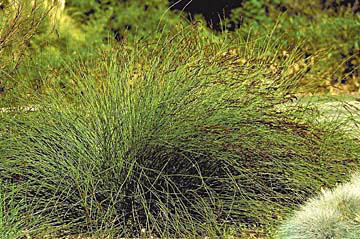
Chondropetalum tectorum Chondropetalum tectorum Cape thatching reedSun:Water: -
Cornus sericea
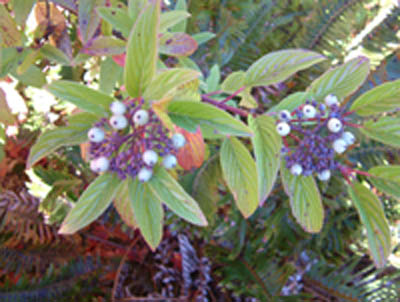
Cornus sericea Cornus sericea redtwig dogwood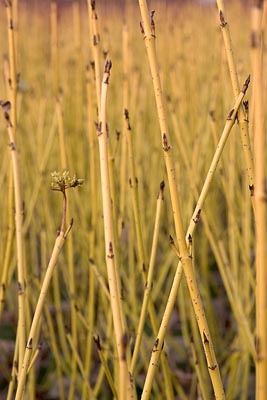
Cornus sericea 'Flaviramea' Cornus sericea 'Flaviramea' yellowtwig dogwoodPond Margin or Bog. Brilliant red or yellow foliage and colorful winter twigs. Provide good screens where water is present. to 8 feet tall and 10 feet wide. Cut roots to control spread.
Sun:Water:Tahoe Basin native -
Alisma plantago-aquatica
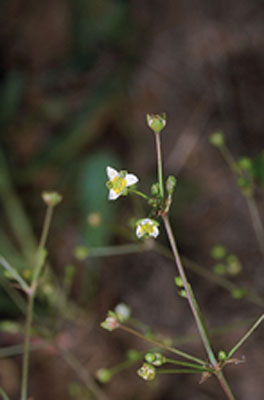
Alisma plantago-aquatica Alisma plantago-aquatica common waterplantainPond Margin or Bog. Herbaceous perennial with flowers heads arranged in whorls of white, pink, or lavender. Blooms form a pyramid-like shape. Suitable for medium to large ponds, but may overwhelm a small one. 12 to 36 inches tall and up to 18 inches spread.
Sun:Water:Tahoe Basin native -
Aponogeton distachyon
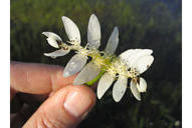
Aponogeton distachyon Aponogeton distachyon cape pondweedFloating or Rooted Emergent Plants. Crisp white flowers with a vanilla scent are held on the water surface. Prefers cool water. May overwhelm a small pond.
Sun:Water: -
Azolla filiculoides
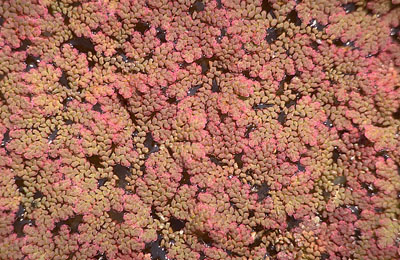
Azolla filiculoides Azolla filiculoides Pacific mosquito fern, fairy fernFloating or Rooted Emergent Plants. Tiny, free-floating perennial fern. Excellent pond cover for fish and other wildlife. Turns reddish-purple in the fall. To 1/2 inch high, with a spreading habit. May overwhelm a small pond.
Sun:Water:Tahoe Basin native -
Baccharis salicifolia
Baccharis salicifolia mulefatPond Margin or Bog.
Sun:Water:Tahoe Basin native -
Bambusa aquatics
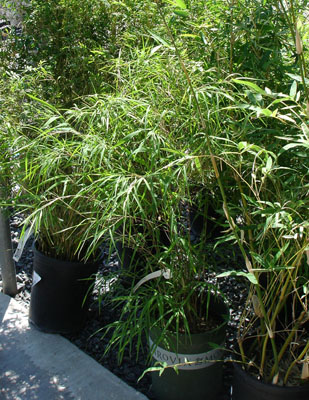
Bambusa multiplex 'Alphonso-Karr' Bambusa multiplex 'Alphonso-Karr' 'Alphonso-Karr' bamboo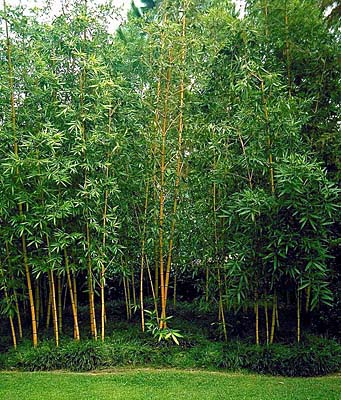
Bambusa multiplex 'Golden Goddess' Bambusa multiplex 'Golden Goddess' 'Golden Goddess' bamboo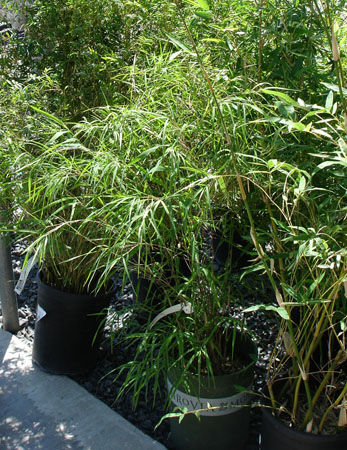
Bambusa multiplex Bambusa multiplex bamboo (clumping species only)Pond Margin or Bog. Useful as a hedge or screen. Rhizomes of clumping species stay close to the plant and will not invade surrounding soil. Height varies by cultivar, up to 35 feet. Do not plant running bamboos, which spread aggressively.
Sun:Water:
